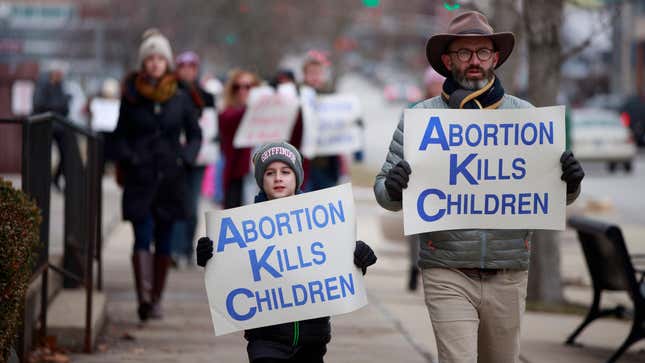Violence Against Abortion Providers and Patients Is Too Normal in This Country
The Right is only escalating its attacks on a safe health care procedure, and we are just letting it happen.
AbortionPolitics

Across the street from the last abortion clinic in West Virginia is a nearly acre-size vacant lot that’s been for sale for about two years. For its most recent 40-day prayer action at Women’s Health Center of West Virginia, an anti-abortion group rented out the lot, using it to erect a “cemetery” with paper crosses.
Now, the protesters own the lot. “It’s right across the street from our clinic. Where patients have to walk on the sidewalk to get into our front door, they’ve erected at least 10-, maybe 12-foot giant cross,” Katie Quiñonez, director of the clinic, told Jezebel. “It’s mental warfare, because what they’re trying to do is shame and guilt people who are seeking health care.”
Discussion about violence against abortion providers is largely confined to reports of shootings and arson, physical acts of violence we can quantify. But the legality of abortion is hanging in the balance, waiting for an ultra-conservative Supreme Court supermajority to tell us how little bodily autonomy is legal. And bounty schemes against abortion providers are becoming the norm.
Since Dr. David Gunn was murdered outside his clinic in Pensacola, Florida, in 1993, abortion providers have endured 26 more years of physical violence, bomb threats, arson, and shootings. We’ve also seen decades of online harassment, patient and worker in-person intimidation, trespassing, and doxxing. It’s time we broaden what constitutes violence against abortion care providers and patients.
-

-

-

-

-

-

-

-

-

-

-

-

-

-

-

-

-

-

-

-

-

-

-

-

-

-

-

-

-

-

-

-

-

-

-

-

-

-

-

-








































